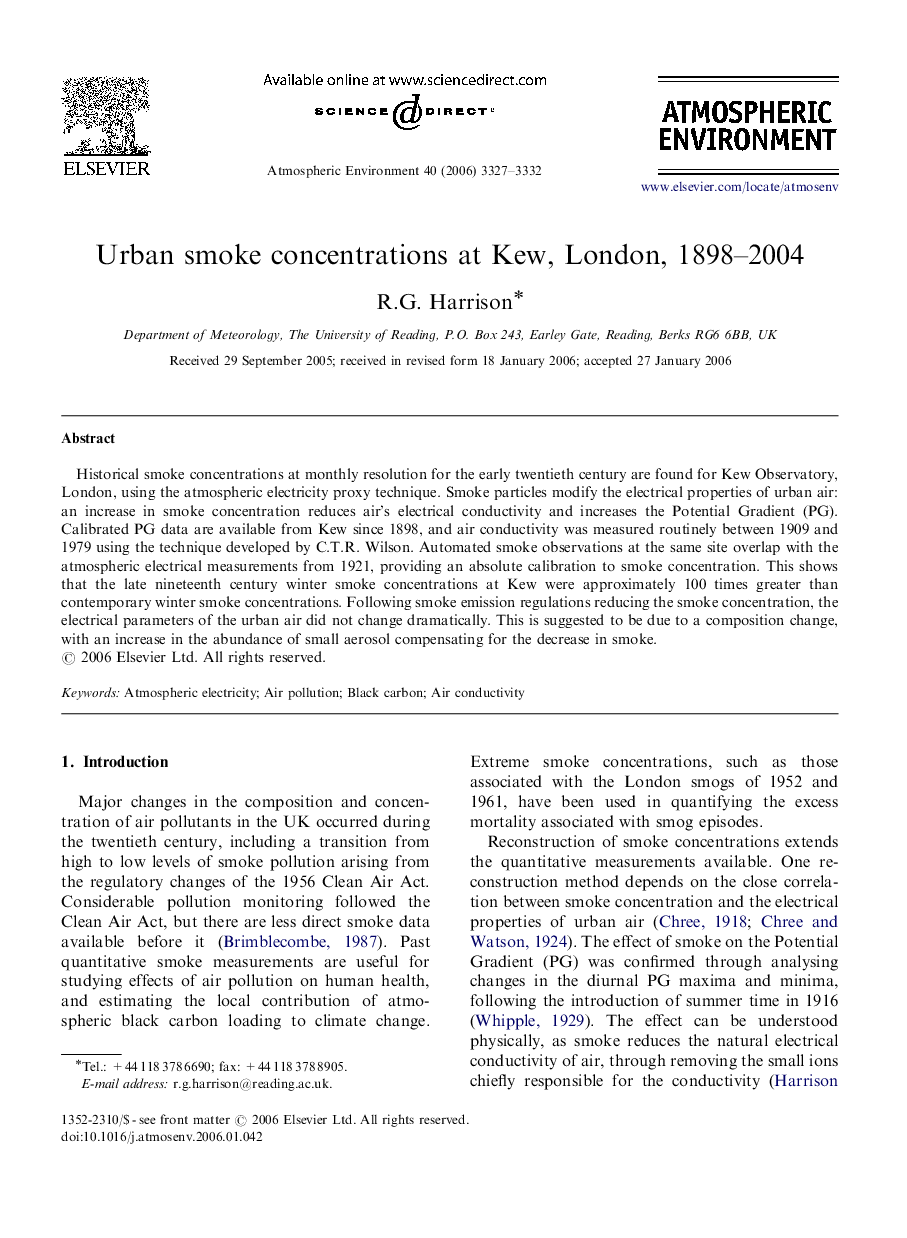| Article ID | Journal | Published Year | Pages | File Type |
|---|---|---|---|---|
| 4444833 | Atmospheric Environment | 2006 | 6 Pages |
Historical smoke concentrations at monthly resolution for the early twentieth century are found for Kew Observatory, London, using the atmospheric electricity proxy technique. Smoke particles modify the electrical properties of urban air: an increase in smoke concentration reduces air's electrical conductivity and increases the Potential Gradient (PG). Calibrated PG data are available from Kew since 1898, and air conductivity was measured routinely between 1909 and 1979 using the technique developed by C.T.R. Wilson. Automated smoke observations at the same site overlap with the atmospheric electrical measurements from 1921, providing an absolute calibration to smoke concentration. This shows that the late nineteenth century winter smoke concentrations at Kew were approximately 100 times greater than contemporary winter smoke concentrations. Following smoke emission regulations reducing the smoke concentration, the electrical parameters of the urban air did not change dramatically. This is suggested to be due to a composition change, with an increase in the abundance of small aerosol compensating for the decrease in smoke.
